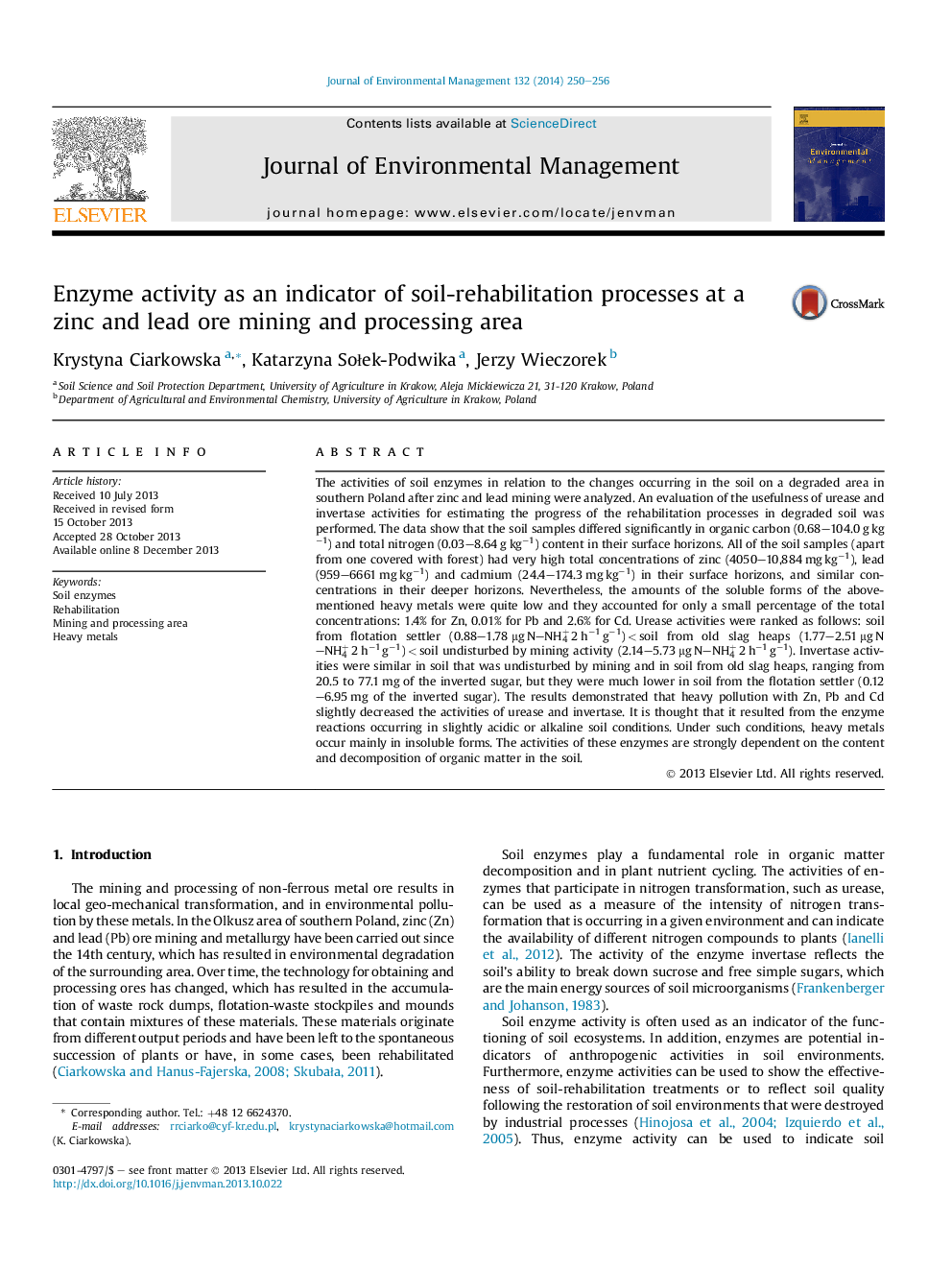| کد مقاله | کد نشریه | سال انتشار | مقاله انگلیسی | نسخه تمام متن |
|---|---|---|---|---|
| 1055801 | 1485280 | 2014 | 7 صفحه PDF | دانلود رایگان |
• Urease and invertase activities were strongly impacted by organic matter contents.
• Long-term, heavy metal pollution in neutral soil slightly lowered enzyme activities.
• Urease and invertase activities can be progress indicators for soil rehabilitation.
The activities of soil enzymes in relation to the changes occurring in the soil on a degraded area in southern Poland after zinc and lead mining were analyzed. An evaluation of the usefulness of urease and invertase activities for estimating the progress of the rehabilitation processes in degraded soil was performed. The data show that the soil samples differed significantly in organic carbon (0.68–104.0 g kg−1) and total nitrogen (0.03–8.64 g kg−1) content in their surface horizons. All of the soil samples (apart from one covered with forest) had very high total concentrations of zinc (4050–10,884 mg kg−1), lead (959–6661 mg kg−1) and cadmium (24.4–174.3 mg kg−1) in their surface horizons, and similar concentrations in their deeper horizons. Nevertheless, the amounts of the soluble forms of the above-mentioned heavy metals were quite low and they accounted for only a small percentage of the total concentrations: 1.4% for Zn, 0.01% for Pb and 2.6% for Cd. Urease activities were ranked as follows: soil from flotation settler (0.88–1.78 μg N–NH4+ 2 h−1 g−1) < soil from old slag heaps (1.77–2.51 μg N–NH4+ 2 h−1 g−1) < soil undisturbed by mining activity (2.14–5.73 μg N–NH4+ 2 h−1 g−1). Invertase activities were similar in soil that was undisturbed by mining and in soil from old slag heaps, ranging from 20.5 to 77.1 mg of the inverted sugar, but they were much lower in soil from the flotation settler (0.12–6.95 mg of the inverted sugar). The results demonstrated that heavy pollution with Zn, Pb and Cd slightly decreased the activities of urease and invertase. It is thought that it resulted from the enzyme reactions occurring in slightly acidic or alkaline soil conditions. Under such conditions, heavy metals occur mainly in insoluble forms. The activities of these enzymes are strongly dependent on the content and decomposition of organic matter in the soil.
Journal: Journal of Environmental Management - Volume 132, January 2014, Pages 250–256
